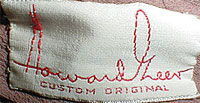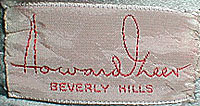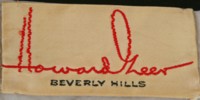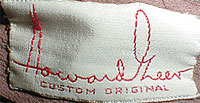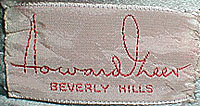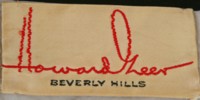Howard Greer (1886-1974) got his start as a sketch artist for Lucile, Ltd. in 1916. He served in World War I on the front line in Europe, staying in Paris afterward and working for Lucile, Molyneux and Poiret. Greer returned to New York in 1921 and became a costume designer for Famous Players Lasky, the forerunner of Paramount. He designed primarily modern dress films with glamorous wardrobes for the star, no matter what her social standing. Greer’s contract ran until 1927, when he left Paramount to work in custom clothing and leave the black and white constraints of film.
Greer opened Greer, Inc. in Los Angeles late in 1928 with a legendary star-packed opening. He was the first major costume designer to take the leap of establishing his own couture house. He started with custom design, then added ready to wear alongside it by 1947. After that his clothing was sold around the country and he was in the top tier of American ready-to-wear designers . Greer specialized in cocktail and dinner dresses that he specifically designed to look good seated at a table with stunning necklines. His clientele continued to include film actresses, but he added society women and their daughters as the quality of his salon’s workmanship became apparent. Well into the 1950s Howard Greer continued to supply film costumes for studios without in-house designers.
Greer’s look, while varied, tended toward the expensive afternoon and evening clothes of the fitted torso type with eye-catching effects. In many ways, he remained true to his training as a costume designer. He didn’t follow the padded shoulder line of the 1940s, and liked to work with black combined with a range of pinks for contrast. Greer’s 1951 autobiography was entitled Designing Male. He retired in 1962.
Written by pastperfectvintage.com
